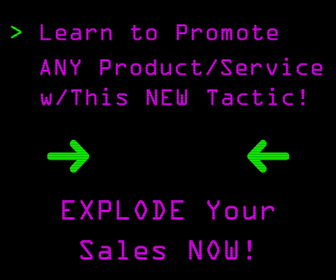Is your email list just one big blob of names and email addresses?
If so, your conversion rates might not be as high as they could be.
The thing is, your audience isn't one big homogenous group.
They don't have the same needs, the same wants, or even the same values, necessarily.
There's a demographic mix in there, and it's a mix that can be a lot more subtle than just the basics like age, gender, and geographic location.
You need to target those subgroups separately, and that's where email list segmentation comes in. You've got people at very different stages in the buyer's journey.
You've got people who are just interested in your content, and they came across you in an RSS feed or something.
Then, you've got people who may very well call you tomorrow morning, wanting to work with you or buy your product.
It's a mix.
And these people respond to different messaging — not only in your emails, but on social media, too.
A recent article from Kissmetrics details this effect.
What to Look For With Segmentation
Just like with email list segmentation, segmenting your other marketing techniques should be rooted in the data you’re collecting.
Don’t just skim over your analytics reports.
Dig deeper and look at the big picture as well as the individual pieces.
Chances are, there are some small but highly engaged groups that may stand out.
Here are some common areas that may stand out:
- Geography
You can use this demographic for multiple areas of your marketing.
Are more users from a certain country converting at a higher percentage than others?
Is the paid traffic from Indonesia converting?
Segment your paid traffic and organic traffic to see which markets are outperforming and cut off funding to countries that don’t convert.
- Device type
Many marketers may be looking at their overall conversion rate without segmenting by device type.
Do significantly more conversions happen on desktop than mobile?
That may be a signal that your mobile site needs work.
- Product category
E-commerce companies may want to dig through the data on their first-time purchasers.
Is there a particular item that they like to order?
If one stands out, you may want to use that in your paid marketing to see if those ads outperform others.
- Signup type
SaaS companies frequently have a couple different ways to convert visitors to prospects – they either signup or request a demo.
Build a funnel through the buyer journey – from first visit to paying – and see if you get more paying customers from either signups or purchases.
If one significantly wins over the other, you may want to make that your only signup method.
- Marketing channel
Think about all the different channels that are sending traffic your way.
You have paid channel (and multiple channels within that – facebook ads, adwords, etc), organic search, referral traffic (backlinks), email, social, and more.
Breakdown your site traffic and conversions by channel.
By the way, you can do all of this in Kissmetrics.
What Else Can You Segment?
The real question is — what can’t you segment?
With the right analytics foundation, you can split test, monitor, track and analyze almost anything.
Every attribute a person has – what city they’re visiting from, what browser they’re using, what time they visit, gender, etc can be segmented.
You can read more about how to find the best ways to segment your email list over at Kissmetrics.
CHALLENGE Yourself to Profit!
Free Download: Build Your Profit-Generating Online Business With This Free Blueprint
Sign Up, follow the easy steps and You'll get the tactics, strategies & techniques needed to create your online profit stream. It's free!



